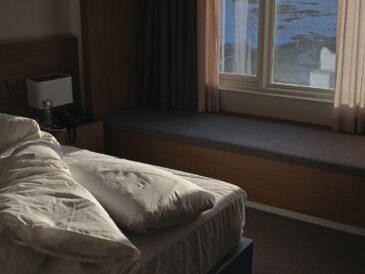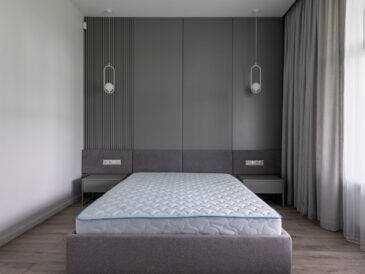Box springs are wooden (or metal) frames filled with coils that serve to both support your mattress while increasing airflow around it, thus helping prevent mildew growth and provide height that makes getting in and out of bed easier.
Modern mattresses don’t need box springs to remain comfortable or last. Alternatives like platform beds or slatted bed frames have taken their place in many households.
They’re clunky
Box springs are exactly as they sound – boxes filled with springs. As bed bases, they serve to connect your mattress to either the floor or an bed frame and can be made of wood, metal, or fabric; eventually these springs may start making noise as they move against each other, creating an uncomfortable sleep experience, especially if living in an apartment building with thin walls and floors.
Platform beds provide an alternative to cumbersome box springs by keeping your mattress off of the ground, and come in various styles and designs to match any decor. Not only are these lightweight options more cost effective but their airflow prevents mold growth as well.
If you still prefer using a box spring, some modern mattress brands suggest doing so provided there is adequate center support. Helix recommends using traditional box springs if the slats are less than four inches apart and there is plywood or other suitable center support in your foundation; other brands such as Casper, GhostBed and Tuft & Needle make their own box spring replacements to provide rigid support needed by foam or latex mattresses without using traditional box springs.
They’re expensive
If you are considering purchasing a mattress, one question you may have is if a box spring is essential. Traditionally, they were used under innerspring mattresses to relieve coil strain and prevent sagging; today however, most modern mattress-in-a-box models do not need them; in fact some mattress types – like latex and foam ones – even do better without.
Box springs are expensive to buy and maintain. Additionally, they take up space that makes storage challenging. Furthermore, recycling them can be challenging because their material doesn’t compress well – leading to millions of mattresses ending up in landfills every year and creating an expensive burden on waste officials. Due to this challenge, some states (e.g. California, Connecticut and Rhode Island) now mandate consumers pay a small fee to participate in mattress recycling programs.
Goodwill Industries of Duluth, Minnesota houses a maze of boxes and mattresses stacked twenty high on its warehouse floor. Employees work quickly to pull apart each mattress by hand and strip its fabric while dismantling 80 to 100-pound spring cages by hand as well. Due to this costly task requiring multiple employees working overtime shifts for each spring cage alone. Three states recently started charging consumers an affordable fee to recycle their mattresses and box springs.
They’re hard to move
Box springs can be awkward to move up and down stairs or through tight hallways, making maneuvering around corners difficult and time consuming. Furthermore, this task can be costly. If you require assistance in moving a box spring you should hire professional movers to make this task more manageable.
A box spring is a rectangular support system used to raise mattresses to an appropriate level. Usually installed alongside a bed frame, box springs provide sturdy support while adding attractive style. Constructed either from wood or metal and covered in fabric for increased comfort, box springs can either be placed on wheels or directly on the floor for easy placement.
Modern manufacturers are developing box spring alternatives without spring coils; for instance, wooden slats may provide greater durability and stability compared to their spring counterparts; yet many people still prefer box springs because it enhances their mattress appearance while giving sufficient support.
Dependent upon your mattress type, it may be possible to eliminate the need for a box spring altogether. Many bed-in-a-box mattresses feature built-in support layers that serve the same function, so this accessory may no longer be necessary. Before making this decision, however, be sure to verify if your frame requires one first.
They’re heavy
A box spring is a wooden frame of equal size to your mattress that your bed sits upon, covered in fabric and filled with springs or metal coils for support and lift, motion transfer reduction and improved airflow in bed. They’re commonly chosen as complements to innerspring mattresses but should not be used with memory foam or latex beds as their coils can break or wear out over time.
Beds require something between the mattress and floor for proper airflow and sanitation purposes; most sleepers will prefer either a box spring, foundation, or platform bed to meet this need.
Box springs and foundations are made of either wood or metal with coils wrapped inside, providing sturdy support. Both offer this support but with different features; for instance, low-profile box springs offer half as much height and work well in rooms with high ceilings.
Bunkie boards, which stand just 2 inches high, can help protect memory foam or latex mattresses against wear-and-tear, and come highly recommended by bed-in-a-box companies as a preventive measure against premature mattress deterioration.




